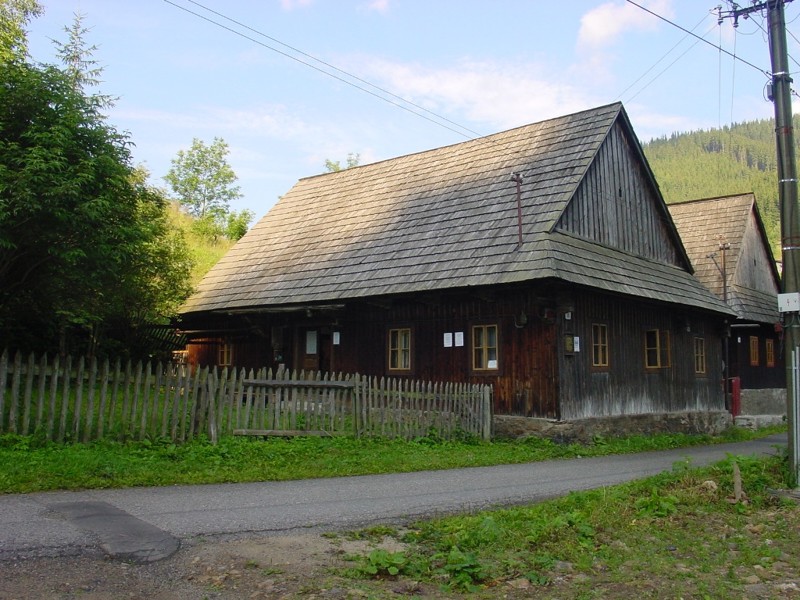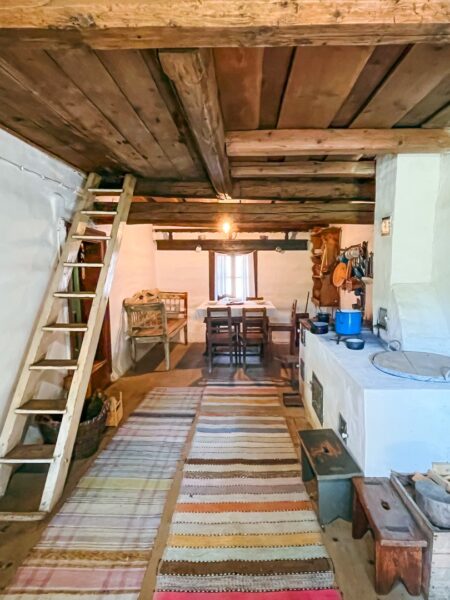20% DISCONT on entry
The discount applies in: Liptovské múzeum Ružomberok (The Liptov museum), Múzeum (museum) Čierny orol Liptovský Mikuláš, Národopisné múzeum (Etnographic museum) Liptovský Hrádok, Expozícia baníctva Maša – Liptovský Hrádok (Museum of Mining and Metallurgy Maša), Banícky dom (Mining huse) Vyšná Boca, Múzeum Liptovskej dediny v Pribyline (Museum of Liptov village), Hrad (castle) Likava.
Exposition of the traditional way of life and living of a mining family in a house with the original equipment. It was donated for museum purposes by the last owner, Daniel Böhmer. The mining house has a five-room layout with the original heating system. The entrance area functions as a communication area and also served to prepare food. The front room was only an occasional living room. In the backroom, which in the past was used for sleeping and daily life, there is an exhibition on the history of mining in the vicinity of Vyšná Boca. There are two storerooms in the house, one serves for occasional sleeping and storage of duvets and clothes, the second one was used to store household utensils and food. In the farm building, the “stable”, which is part of the farm, there is an exhibition of cattle, sheep and meadow farming, which has characteristic features in Bocianská valley and after the suppression of mining activities became one of the main jobs of the local population.
In the summer, demonstrations of traditional forms of hay transport “Bocké batohy” and occasional events dedicated to the mining traditions of the Bocianská valley are being held. Part of the Mining Route – a cognitive and experiential product from the portfolio of the Liptov Museum in Ružomberok. National cultural monument.
Liptov Museum Ružomberok – geology, palaeontology and botany, zoology, Feudalism, Guilds and crafts in Liptov, Ethnography, Gallery of Sacred Art of Liptov, Life and work of Andrej Hlinka, History of paper production, From the history of Ružomberok.
Museum of the Liptov village in Pribylina – exposition of housing and way of life of various social and social strata of the population of Liptov in the past.
Black Eagle Museum Liptovský Mikuláš – From the history of hunting and fishing in Liptov.
Ethnographic Museum Liptovský Hrádok – Exposition of sheepfolds and a gallery of folk art, Folk blueprint in Liptov, Gallery of bobbin lace. Comorian Office of the Likavian-Hrádok Estate, Historic Salt Road, From the History of Liptovský Hrádok.
Farmer’s house and yard Vlkolínec – Exposition of traditional housing and way of life.
Exposition of mining Maša – Liptovský Hrádok – Traditions of Hornoliptov mining and metallurgy.
Church of All Saints Ludrová – Rural colonization church, built in the last third of the 13th century in the area between Ružomberok and Liptovská Štiavnica.
Likava Castle – Its construction began due to the guarding of the passage through Váh and an important trade route that led from Považie to Orava and further to Poland.
Archaeological Museum Liptovská Mara – Havránok – one of the most important archaeological sites in Slovakia.



Please describe your experience